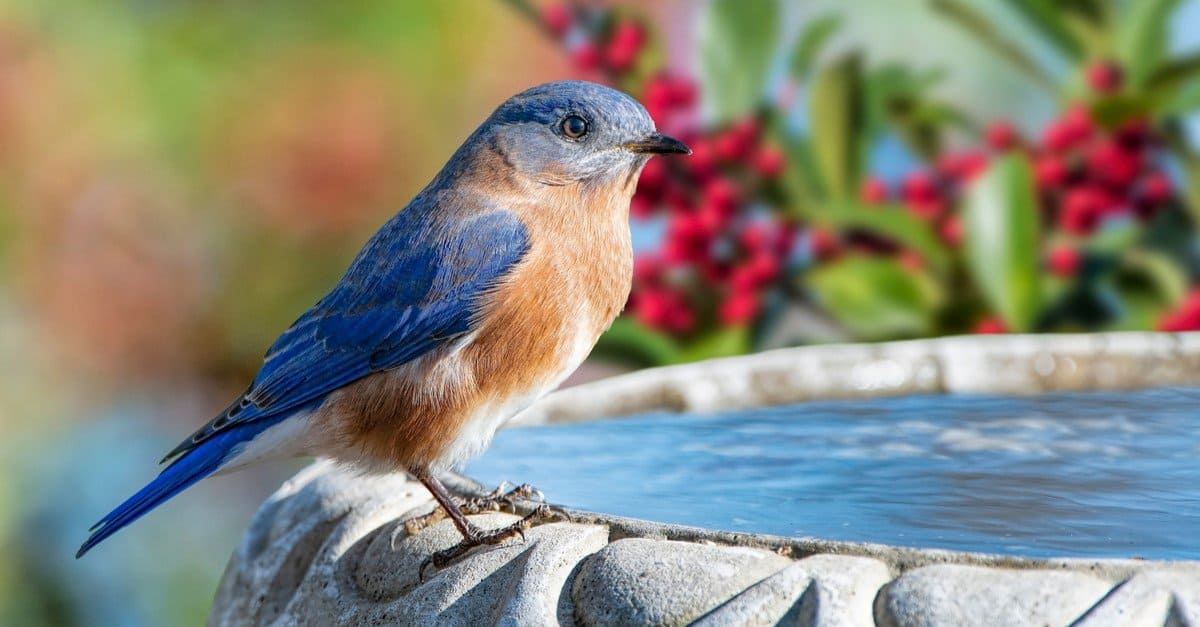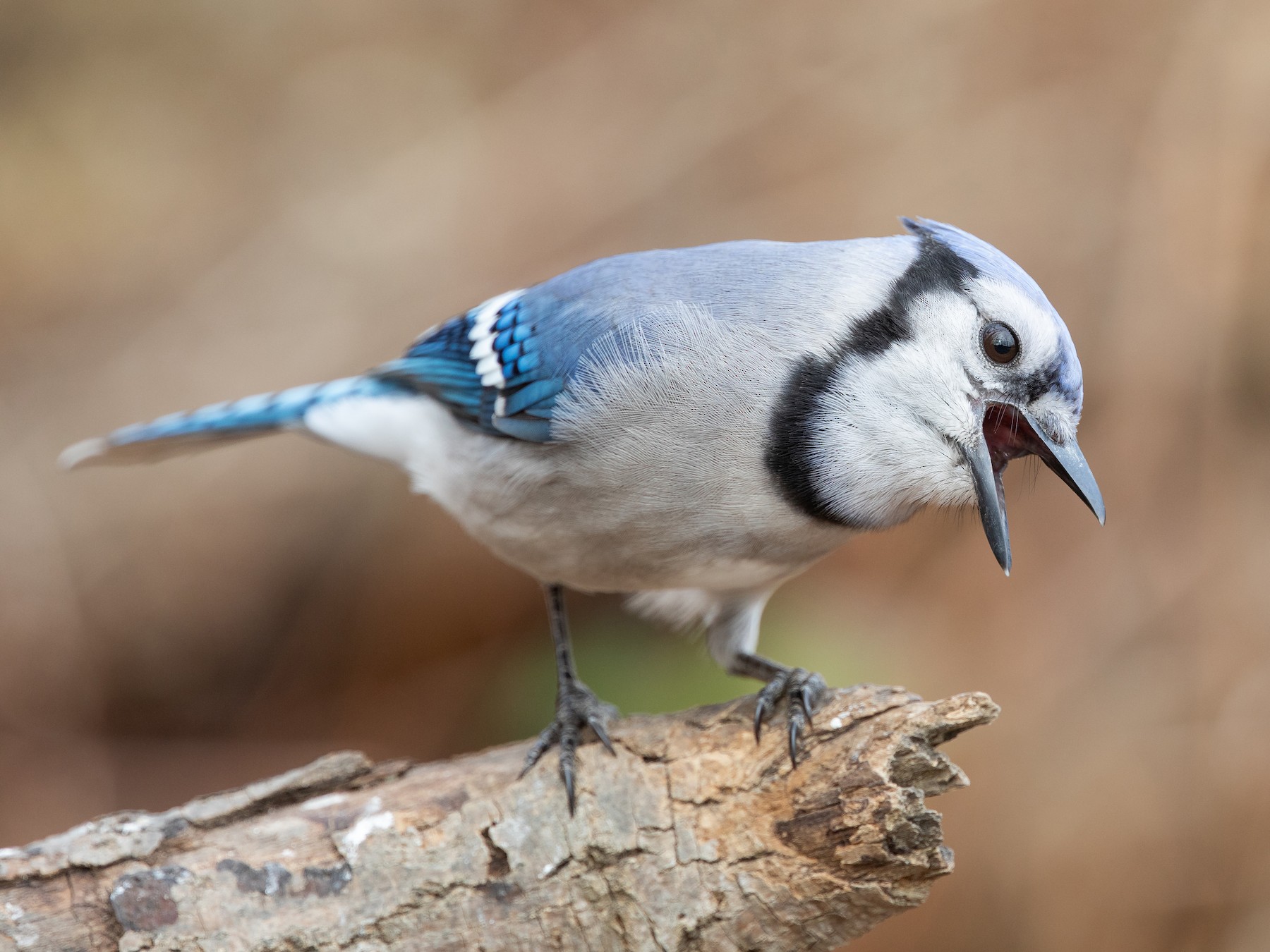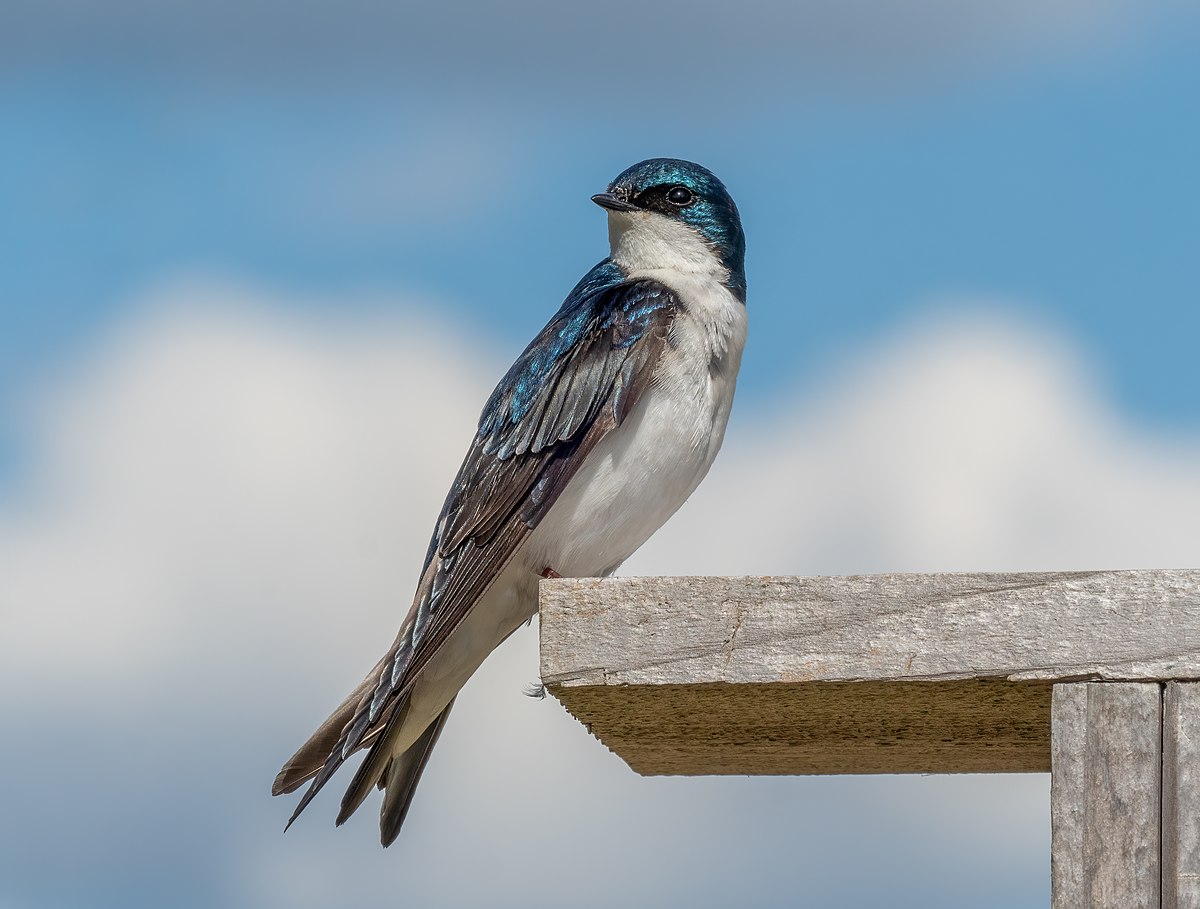Blue birds are some of the most beautiful and striking birds in the avian family. Blue is a rare color in nature, and therefore, blue birds are not so common. However, there are many types of birds that are blue, and they can be found all over North America.
In this article, we will discuss five types of birds that are blue, including the Eastern Bluebird, Indigo Bunting, Blue Grosbeak, Blue Jay, and Tree Swallow. We will also explore some interesting facts about these birds and their habitats. So, let’s dive in and discover the kaleidoscope of color in the avian world!
You are reading: 5 Types Of Birds That Are Blue

5 Types Of Birds That Are Blue
Eastern Bluebird
The Eastern Bluebird is a small migratory thrush that is found in open woodlands, farmlands, and orchards throughout eastern North America.
The male Eastern Bluebird has a bright-blue breeding plumage that makes it a favorite of birders. The female Eastern Bluebird is a duller, bluish-gray color with varying hues of blue on the wings and tail.
Eastern Bluebirds live in open country around trees, but with little understory and sparse ground cover. Original habitats probably included open, frequently burned pine savannas, beaver ponds, and other open areas with scattered trees.
Eastern Bluebird populations increased between 1966 and 2019, according to the North American Breeding Bird Survey. Partners in Flight estimates a global breeding population of 23 million, and the species rates a 7 out of 20 on the Continental Concern Score, indicating a species of low conservation concern.
Eastern Bluebirds eat mostly insects, wild fruit, and berries, and occasionally, they have also been observed capturing and eating larger prey items.
Indigo Bunting
The Indigo Bunting (Passerina cyanea) is a small seed-eating bird in the cardinal family, Cardinalidae, that is migratory and ranges from southern Canada to northern Florida during the breeding season, and from southern Florida to northern South America during the winter months.
Read more : Do Birds Eat Beetles?
Here are some interesting facts about the Indigo Bunting:
– The male Indigo Bunting is a vibrant blue color during the breeding season, with brightly colored plumage to attract a mate. It is brown during the winter months, while the female is brown year-round.
– Indigo Buntings are small, roughly sparrow-sized, stocky birds with short tails and short, thick, conical bills.
– The adult Indigo Bunting measures 11.5–15 cm (4.5–5.9 in) long, with a wingspan of 18–23 cm (7.1–9.1 in), and body mass averages 14.5 g (0.51 oz).
– The diet of the Indigo Bunting consists primarily of insects during the summer months and seeds during the winter months.
– Indigo Buntings are often seen in midsummer along rural roads, where they often sing from telephone lines or wooded edges for hours on end. During migration, they may be seen feeding in agricultural fields or on lawns.
– Indigo Buntings defend territories against each other in the breeding season.
– Like all other blue birds, Indigo Buntings lack blue pigment. Their jewel-like color comes instead from microscopic structures in the feathers that refract and reflect blue light, much like the airborne particles that cause the sky to look blue.
– Indigo Buntings are sexually dimorphic, with only males having blue plumage during their breeding season. Females, juveniles, and males in winter plumage are an unassuming tawny brown.
Indigo Buntings are a beautiful and fascinating species of bird that can be found throughout North and South America.
Blue Grosbeak
The Blue Grosbeak (Passerina caerulea) is a medium-sized North American passerine bird in the cardinal family Cardinalidae. Here are some interesting facts about the Blue Grosbeak:
Identification:
– The male Blue Grosbeak is a deep blue color with brownish-red wing bars and a large silver bill that covers the entire front of its face, from throat to forehead.
– The female Blue Grosbeak is mainly brown with scattered blue feathers on the upperparts and two brown wing bars.
– The Blue Grosbeak is a stocky songbird with a very large, triangular bill.
Habitat and Distribution:
– The Blue Grosbeak breeds in northern Mexico and the southern United States and is mainly migratory, wintering in Central America.
– The Blue Grosbeak is found in open habitats such as fields, pastures, and woodland edges.
– The Blue Grosbeak is a fairly common bird in the southern United States, but its population has declined in some areas due to habitat loss.
Behavior and Diet:
– The Blue Grosbeak feeds on insects, seeds, and fruits.
– The male Blue Grosbeak sings a rich, warbling song from trees and shrubs.
– The Blue Grosbeak is monogamous and forms pairs during the breeding season.
The Blue Grosbeak is a beautiful and fascinating bird that can be found in open habitats throughout the southern United States.
Blue Jay

The Blue Jay (Cyanocitta cristata) is a passerine bird in the family Corvidae, native to eastern North America. Here are some interesting facts about the Blue Jay:
Identification:
– The Blue Jay is a large, crested songbird with a broad, rounded tail.
– The Blue Jay has blue, white, and black plumage, with a perky crest on its head.
– The Blue Jay is smaller than a crow but larger than a robin.
Habitat and Distribution:
– The Blue Jay is found in most of the eastern and central United States, as well as southern Canada and Newfoundland.
– The Blue Jay breeds in both deciduous and coniferous forests and is common in residential areas.
– The Blue Jay occupies a variety of habitats within its large range, from the pine woods of Florida to the spruce-fir forests of northern Ontario.
Behavior and Diet:
– The Blue Jay is a noisy, bold, and aggressive passerine bird.
– The Blue Jay is a moderately slow flier, flying at roughly 32–40 km/h (20–25 mph).
– The Blue Jay feeds on insects, nuts, seeds, and fruits.
– The Blue Jay is known to cache food, hiding it in trees or on the ground for later consumption.
– The Blue Jay is intelligent and adaptable, and can easily adapt to human activity, occurring in parks and residential areas.
The Blue Jay is a beautiful and fascinating bird that can be found in a variety of habitats throughout eastern North America.
Tree Swallow

The Tree Swallow (Tachycineta bicolor) is a migratory bird of the family Hirundinidae, found in the Americas. Here are some interesting facts about the Tree Swallow:
Identification:
– The Tree Swallow has glossy blue-green upperparts, with the exception of the blackish wings and tail, and white underparts.
– Adult males are bright iridescent blue-green above, while females and immatures are duller brownish with a white belly.
– Tree Swallows are streamlined small songbirds with long, pointed wings and a short, squared or slightly notched tail.
Habitat and Distribution:
– Tree Swallows are found in wetlands across northern North America.
– Tree Swallows nest in tree cavities and readily take up residence in nest boxes.
– Tree Swallows are migratory and winter in the southern United States, Mexico, and Central America.
Behavior and Diet:
– Tree Swallows feed on flying insects, such as flies, beetles, and wasps.
– Tree Swallows are known for their acrobatic twists and turns while chasing after flying insects.
– Tree Swallows may supplement their insect diet with berries, such as fruit from bayberry and myrica shrubs.
Read more : Discover The 8 Types Of Hawks In Maryland
The Tree Swallow is a beautiful and fascinating bird that can be found in wetlands across northern North America.
FAQS
1. What is the difference between male and female Eastern Bluebirds?
The male Eastern Bluebird has a bright-blue breeding plumage, while the female is a duller, bluish-gray color with varying hues of blue on the wings and tail.
2. Where can I find Indigo Buntings?
Indigo Buntings are migratory and range from southern Canada to northern Florida during the breeding season, and from southern Florida to northern South America during the winter months.
3. What is the habitat of the Blue Grosbeak?
Blue Grosbeaks are found in brush, roadsides, and streamside thickets, breeding in dense low growth in semi-open country, including woodland.
4. What is the difference between male and female Blue Grosbeaks?
The male Blue Grosbeak is a deep blue color with brownish-red wing bars and a large silver bill, while the female is mainly brown with scattered blue feathers on the upperparts and two brown wing bars.
5. What is the habitat of the Tree Swallow?
Tree Swallows are found in wetlands across northern North America and nest in tree cavities, readily taking up residence in nest boxes.
6. What is the diet of the Blue Jay?
The Blue Jay feeds on insects, nuts, seeds, and fruits.
7. Where can I find Blue Jays?
Blue Jays are found in most of the eastern and central United States, as well as southern Canada and Newfoundland.
8. What is the difference between male and female Tree Swallows?
Adult males are bright iridescent blue-green above, while females and immatures are duller brownish with a white belly.
Source: https://petstutorial.com
Category: Birds










